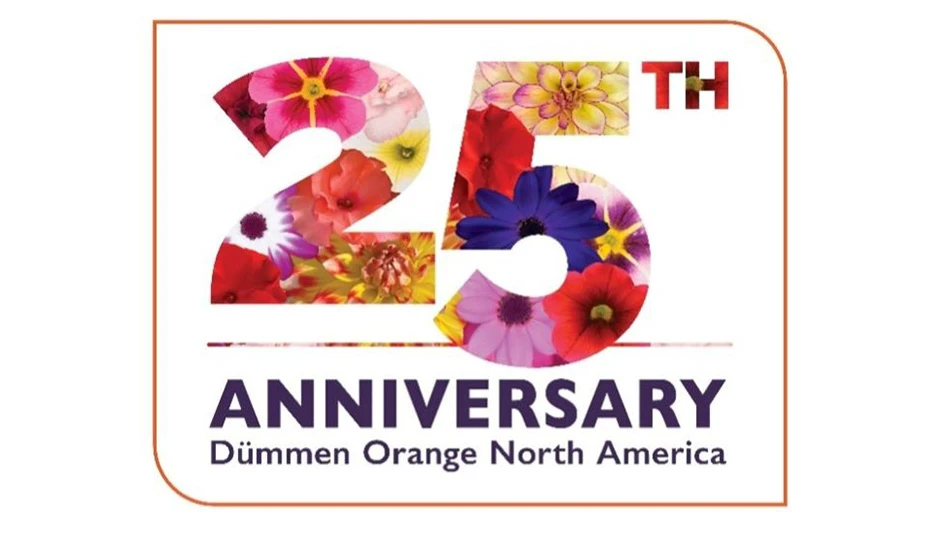
N.G. Heimos Greenhouses and Millstadt Young Plants host Poinsettia Trials
The Millstadt, Ill., grower celebrated the event’s 10th year on Nov. 16, 2017.
By Patrick Williams
On a brisk Thursday in mid-November, attendees at N.G. Heimos Greenhouses and Millstadt Young Plants’ 10th Annual Poinsettia Trials gathered to analyze red, pink, white, orange, green and marble poinsettias, most with flat bracts and some with ruffled ones. They mixed and mingled over coffee, barbecue, baked beans, salad and M&M cookies. Among them were growers, breeders, product suppliers, professors and students.
Approximately 160 varieties from Beekenkamp, Ball/Selecta, Dümmen Orange, Rinehart, Suntory and Syngenta Flowers, including about 20 new varieties, were on display. (Editor’s note: Read the trial results at bit.ly/2kY2LGm) The Nov. 16 event in Millstadt, Ill., also featured presentations by Dr. Jim Faust, professor at Clemson University; and Dr. Will Healy, senior manager of technical services at Ball Horticultural.
Approximately 400 to 500 people attended this year’s event, more than the grower has seen in its past nine years hosting, estimates Adam Heimos, grower and trial manager.
Amy Morris, head grower (and Adam’s aunt), says the event also saw increased sponsorship this year, “from coir to peat to finished deco wrap, chemicals [and] plastic.”
A labor of love
Adam began the 8 a.m. to 4 p.m. event sweeping throughout the trial area, and ended it with a tour for a class from Southeast Missouri State University that ended at the greenhouse's small, yet colorful, dahlia trial. Morris spoke to the audience, introducing Faust and Healy prior to their presentations, as well as her 87-year-old father, company founder Norwin Heimos, who was in attendance.
There is a lot of work that goes into putting together the event, but it is worth it, Adam says. “Everybody says it’s the biggest and best [poinsettia trial], and I want to make sure that we uphold that standard,” he says.

The greenhouses’ employees worked throughout the event, tending to crops in the facility’s 13 ranges. Some could be seen riding bikes to get from bay to bay; others were dressed in white, spray-painting varied hues on poinsettia bracts.
Meeting expectations
The prevailing trend of the poinsettia market, Adam says, is “versatility.” “[Growers] want it to finish when they need it to finish,” he says.
Poinsettias naturally start initiating in mid-September, and depending on whether they are early initiators, they will often finish in mid-to-late November. “From there, it’s all based on your sales,” Adam says.
In 2017, July was hot at transplant, Adam says. “It was 100 degrees at transplant, and then it actually cooled down for August. It was really nice about August, so I finally got some bulk on them. And then during initiation in September, it got hot again.”
The plants were delayed, but there was a silver lining, Morris says. “Because the industry across the board is delayed, they liked seeing that they are right on the same path we are,” she says.

3 varieties that stood out at Plantpeddler’s poinsettia trial
These varieties impressed the growers at the Cresco, Iowa, operation.
By Chris Manning
Plantpeddler’s annual poinsettia trials aim to be unique by showing attendees how the plants perform under natural conditions. At the Cresco, Iowa, greenhouses, poinsettias from breeders such as Dümmen Orange, Syngenta Flowers and Suntory Flowers were grown under natural sunlight in a glasshouse and among Plantpeddler’s other crops.
“A lot of smaller growers we sell to don’t have supplemental lighting, so they can come here and see how the plants would perform in their greenhouses,” says Plantpeddler facility manager Jason Sbiral.
According to Sbiral, Iowa had some out-of-character weather that impacted production in the lead-up to the trials.

“With a poinsettia, you get one shot every year at it, and you can plan for the weather over the production schedule, but it never holds to form,” Sbiral says. “We had a very mild to cool summer, which was fine because everything stayed on track. We had a super warm September where we had two weeks with record temperatures during initiation, and we saw down the line that we had some delayed flowering. We also had, in the end of October, a stretch of 25 to 30 days where it was cloudy. We would normally see that in December. We had to adjust on the fly.”
Here are three varieties that stood out at Plantpeddler’s trial, according to Plantpeddler staff.
‘Green Envy’ (Dümmen Orange Ecke)
One of the most talked-about varieties at Plantpeddler’s trials was ‘Green Envy’ from Dümmen Orange Ecke.
“It was the top pick,” says Brenda Kubik, Plantpeddler young plant production manager. “We’ve had it in the trials the past couple of years, and I didn’t care for it. But this year, I like it. It’s a different, vibrant color, and it stands out.”

Princettia (Suntory Flowers)
“They have different applications, like some of these combination pots,” Sbiral says. “A lot of the plants we grow have bigger bracts. Something like a ‘Prestige’ or ‘Premium’ would dominate the whole landscape, where this has the smaller bracts and makes this application perfect for Princettias.”
The combinations are something Plantpeddler has provided for the past five years, and Sbiral says having a naturally smaller plant only makes producing them easier.
“Before we even had Princettias, it was a good way to use up some sub-grade plants because they were smaller and didn’t need spec for boxing,” Sbiral says.
Whitestar (Syngenta Flowers)
“We do a lot of painting on poinsettias,” Sbiral says, “and this bract is perfect. When you look down from above, you don’t see any green, so when we paint the blues and purples on it, it’s a solid color. It does have this massive bract on it, so it takes a lot of paint to cover it — probably 25 percent more per plant.”
Sbiral adds that, during the growing process, Whitestar (and other painted varieties) is given more space to let it grow out further and reach its maximum strength.
“We have to have strong and sturdy plants, and Whitestar is perfect for that,” he says.

Across the nation
All over the country, 4-H students raise money every year by growing and selling poinsettias. Students in Hayfork, Calif., are no exception.
By Helen M. Stone
On a cold winter morning in the mountains, there isn’t a better place to be than a warm greenhouse bursting with holiday color. The sight of the dazzling flowers, the steamy feel of the heat and the smell of the warm earth make it a haven that just might spark a lifetime interest in agriculture.
All over the country, 4-H students raise money every year by growing and selling poinsettias. In Trinity County, Calif., high school students in Hayfork, formerly a logging hub, are no exception. Program adviser Tad Drain is particularly proud of this year’s students and the exceptional crops they are growing at Hayfork High School.
“This year, we’re growing the Freedom variety and it’s doing really great for us,” he says. The crop of 375 plants will be sold for $5 each, with a few triple baskets at $25. Students sell them near “post office square,” and with a little help from local merchants and community organizations.

“If we sell 300 of them, I’ll be happy, “ Drain says. “All we want to do is pay for the program and help the FFA [students].”
Drain had no agricultural experience when he begame adviser of the program five years ago, but he’s a quick study. One of his first crops was thriving, but was not showing a trace of red color.
“We were baffled,” he recalls. “Then we realized that a floodlight on a motion sensor at the site’s entrance was going off occasionally at night. That was enough to keep them from coloring up.”
With a nonexistent budget, inputs are minimal. “We only use a little water-soluble complete fertilizer on them every few weeks,” he says. Fortunately, insect and disease problems have also been nonexistent this year, too.

The plants are hand-watered by the students. “We tried using the sprinklers, but the plants do much better without getting the leaves wet,” he notes. “We only water every few days. Overwatering is a lot worse than underwatering.”
Tiny budgets and lack of agricultural education are challenging for programs such as these all over the nation, but in spite of that, students like Marina Guilfoile and Taylor Wiley are producing beautiful crops. “I love it when the colors start,” says Guilfoile.
Future greenhouse growers? Let’s hope so.
Get curated news on YOUR industry.
Enter your email to receive our newsletters.
Explore the January 2018 Issue
Check out more from this issue and find your next story to read.
Latest from Greenhouse Management
- Flexible fungicides
- Super Charged Moon Juice from Moon Valley Nurseries now available nationally
- 2025 Proven Winners Horticulture Scholarship applications now open
- How to improve inventory and shipping management in the greenhouse
- Leading Women of Horticulture: Anna Ball, Ball Hort, and Terri McEnaney, Bailey Nurseries
- GM CEA HERB Part 2: A guide to increasing the sowing density of culinary herbs
- GM CEA HERB Part 1: Best practices for producing culinary herbs in controlled environments
- USDA fires experts on invasive pests, including Asian citrus psyllid, chilli thrips






